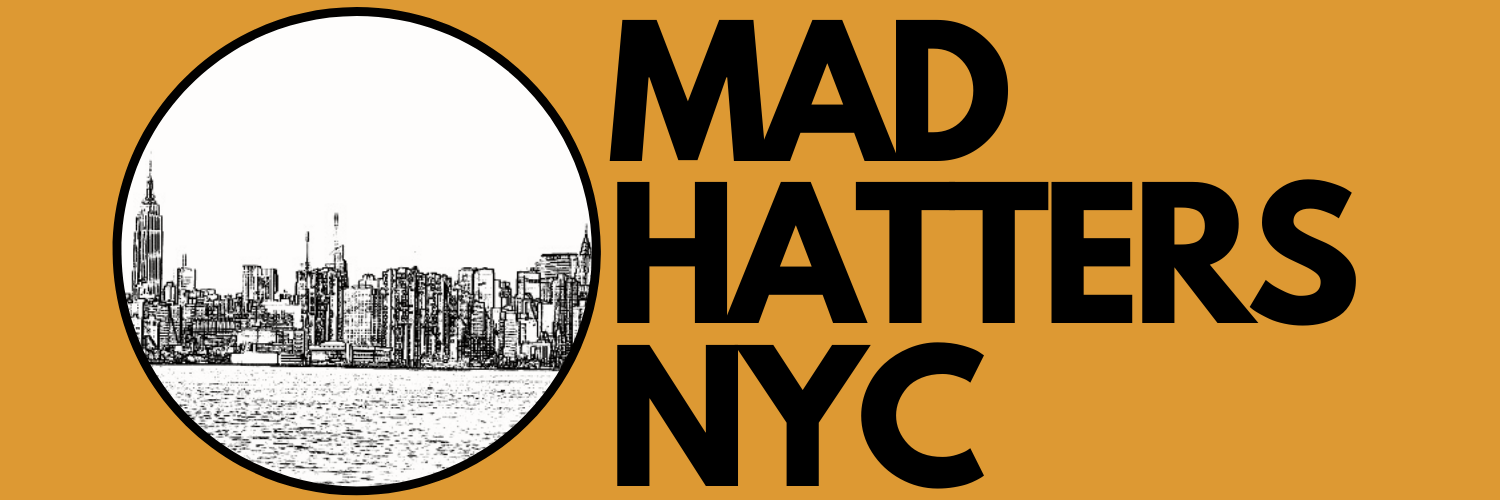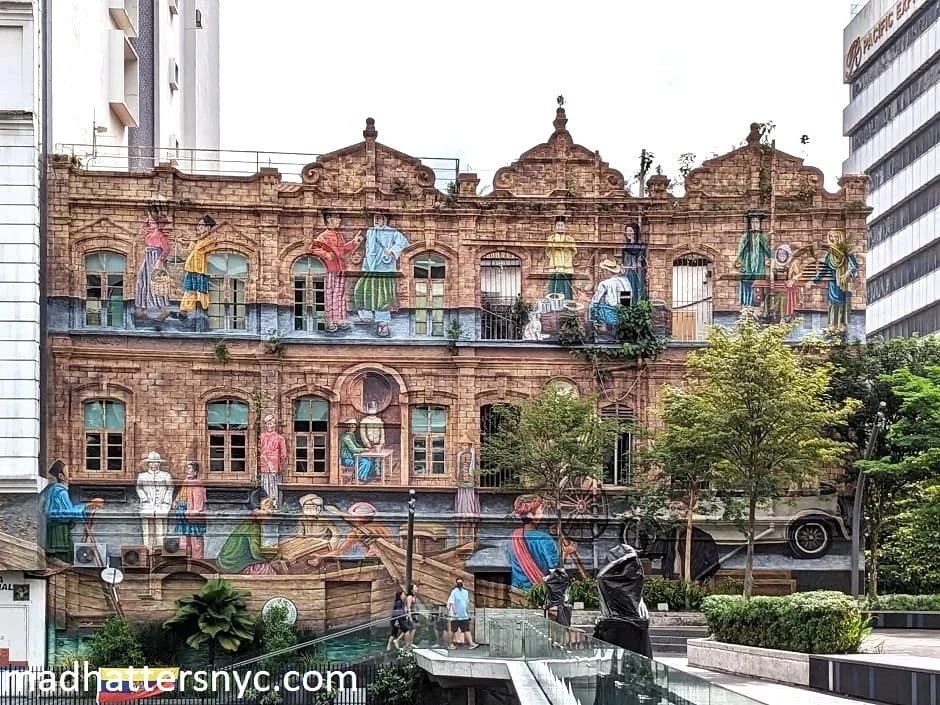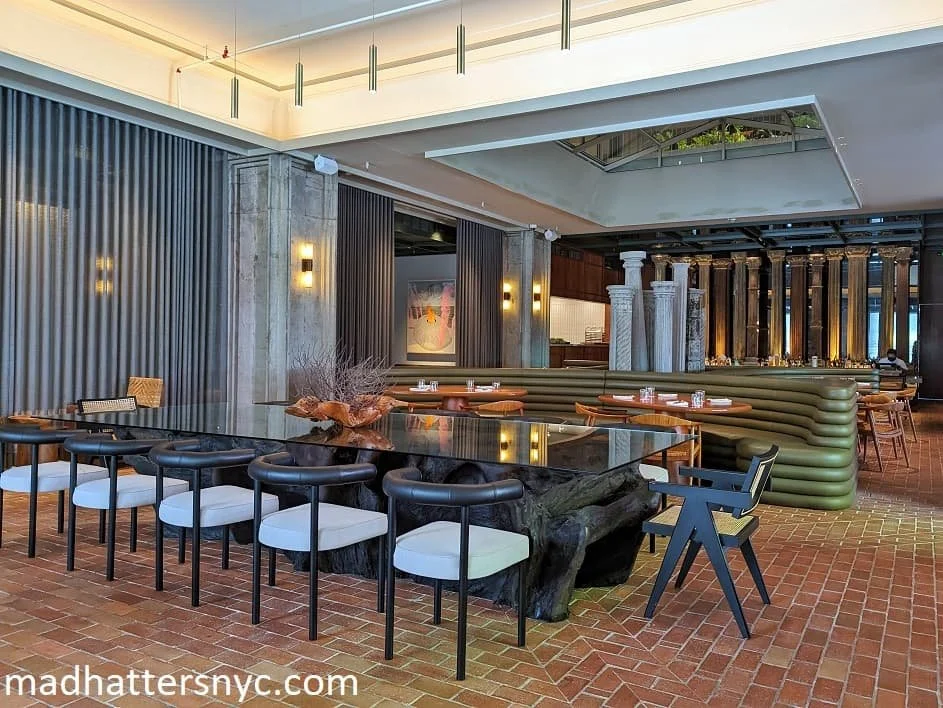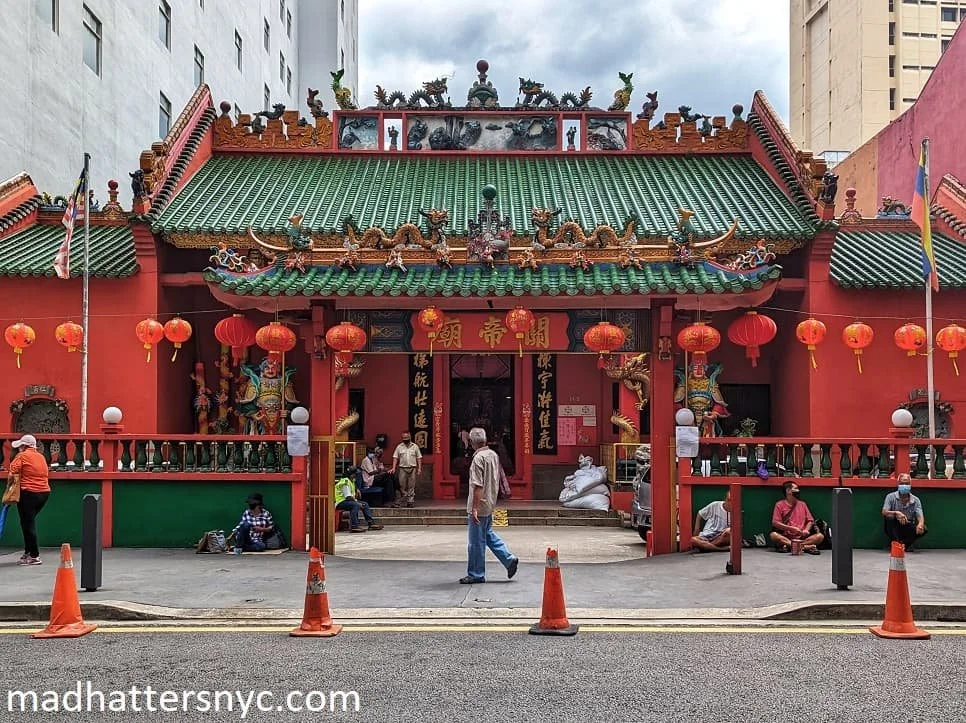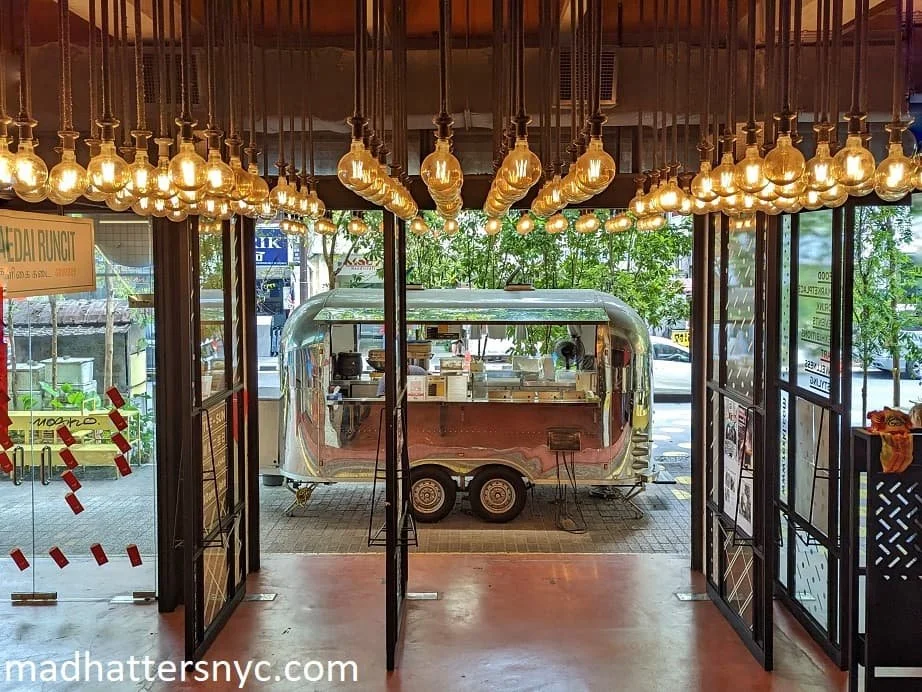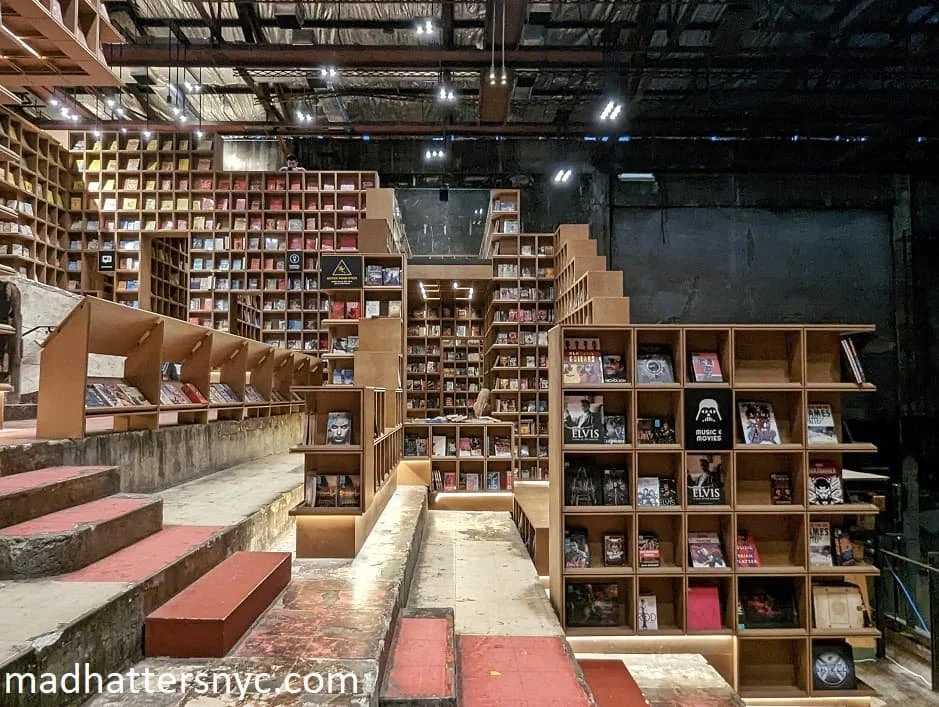A Self-Guided Walking Tour of Kuala Lumpur That Perfectly Mixes Old and New
I grew up in Kuala Lumpur. But every time I return home for a visit, I’m in awe of how much the city continues to change. With the massive refresh of its iconic riverfront, Kuala Lumpur has never been more pedestrian-friendly. A walking tour of the heart of the city is a fun way to witness its rebirth while learning about the country’s history and culture. Let me first say, most locals do not get around KL on foot, largely due to the hot and humid weather. But regular refreshment stops make this walking tour manageable while giving you the perfect mix of old and new KL.
Getting to central KL
Our walk kicks off at Masjid Jamek. To get there, you can use Grab, the rideshare app that is Malaysia’s answer to Uber. Rides are fairly affordable, with slight upticks around rush hour. But for the full local experience, give light rail transit a try. The Masjid Jamek LRT station is just a couple of stops from KL Sentral, the city’s main transit hub.
Masjid Jamek
Malaysia is one of the 23 countries in the world which declares Islam as the state religion in its constitution, and Masjid Jamek served as the national mosque until 1967. Though its official moniker is the Sultan Abdul Samad Jamek Mosque, it’s known locally simply as Masjid Jamek. One of the many remnants of Malaysia’s British colonial past, the mosque was constructed in 1909 and designed by British architect Arthur Benison Hubback. You’ll see Hubback’s signature style all over KL, he was also responsible for one of my favorite buildings growing up, the old KL Railway Station. The mix of architectural elements from east and west was common in the British Raj and British Ceylon as well.
The red brick and marble are aesthetically pleasing, but also function to keep the space cool during the day. Huge parasols in the courtyard are a new feature inspired by Mecca and offer additional shade and relief from the heat. Repetitive multifoil arches and clean white columns create a welcoming space that feels airy yet intimate.
Pro Tip: Visitors are restricted to non-prayer times, between 8:30 am to 12:30 pm and again from 2:30 pm to 4:30 pm. Modest dress is required, but you can borrow a robe to wear over your clothes at the entrance. Entrance to the mosque is FREE.
Riverfront Murals
Medan Pasar riverfront mural by E&M Services
After your Masjid Jamek visit, take a short stroll along the river as you head towards the Klang River Bridge, which will offer a first glimpse of two colossal riverfront murals. One depicts Medan Pasar, or what was once known as Market Square, in 1885. It highlights the multiculturalism central to Malaysia’s identity, with depictions of Malay, Chinese and Indian traders. To produce an authentic piece, the artists behind the project spoke to historians and conducted extensive research at the National Archive.
Lush river bathing mural by E&M Services
The other mural illustrates a lush natural landscape, capturing a time when both elephants and locals once bathed in the upstream portion of the Klang River. Verdant forests and tropical wildlife still make up much of Malaysia’s landscape. The murals are the work of artists Ruhizad (Ejad) Ali and Mohd Yusof Mahadi. Their company, E&M Services, can also be credited for the wildly successful city beautification projects on Jalan Alor and around the Bukit Bintang area, which have drawn thousands of street art enthusiasts over the years.
The River of Life
River of Life: view of Masjid Jamek from Klang River Bridge
Kuala Lumpur directly translates to “muddy confluence”, which references the point where the Gombak River and Klang River meet. That landmark site is now known as the River of Life, and its surrounding area was named one of the world’s best waterfront districts along with such global hotspots as NYC’s Seaport District and Tokyo’s Shibuya Stream. Though Masjid Jamek sits in that very spot, the view is best enjoyed from the Klang River Bridge. It’s also worth bookmarking this spot for a return night visit, when blue lights illuminate the river while mist and fountains produce an ethereal effect.
Central Market
Next, cross the street and head to Central Market. Central Market’s history dates all the way back to 1888. Malaysia did not come by its multiculturalism easily, and in the 1860s and 1870s, Kuala Lumpur was rife with conflict between rival Malay and Chinese factions, which eventually led to the British intervening in the affairs of the Malay states. Much of KL was destroyed in the hostilities, and Central Market was part of the city’s rebuilding efforts. In the 1970s and 1980s, it was recognized as having historical significance, and underwent a massive revitalization project.
Pasar Seni, its Malay moniker, actually translates to Art Market. The space has been home to many small artisans who keep local traditions alive. I remember trekking here as a girl to purchase personalized gifts, which seemed like the ultimate teenage adventure. Today, Central Market is still a great destination for unique gifts, with endless varieties of merchandise and food from local vendors and makers. But with its expansion over the years, Central Market Annexe upped the ante by adding several art galleries and the Illusion 3D Art Museum.
If shopping isn’t your cup of tea, you can take a batik painting class or get a temporary henna tattoo. I regularly recommend a day trip from KL to Melaka, with a focus on the historic Old Town Melaka. But if that’s not in the cards, then you can explore aspects of its unique regional Baba Nyonya culture here. There are myriad fun and creative ways to delve into different aspects of Malaysian heritage.
Kasturi Walk at Central Market
It’s time to head back outdoors and walk towards our first official refreshment stop. Exit Central Market from the south entrance, but take a moment to appreciate the Art Deco façade which dates back to 1937 when the permanent structure was first built. As we exit Central Market, I wouldn’t begrudge you a small detour to explore Kasturi Walk, Central Market’s covered pedestrian walkway where more vendors line the streets.
Else KL
Lee Rubber Building Art Deco exterior
Else KL’s Raw Kitchen Hall
Cross Jalan Tun Sambanthan and take a right on Jalan Tun HS Lee, and within seconds you should see another Art Deco gem on the corner with distinct 45-degree angles. The Lee Rubber Building was built in 1930 and designed by Arthur Oakley Coltman, a British architect practicing in Malaysia. He arrived in Malaya in 1925, and working under architecture firm Booty Edwards & Partners, he developed numerous Art Deco structures in the capital city. At the time of construction, the Lee Rubber Building was the first “high-rise” building with four floors! (A fifth floor was added later.)
But the Lee Rubber Building’s construction is also historically significant for its role in World War II. Kuala Lumpur was occupied by the Japanese in January 1942, and the Kempetai, the military police of the Japanese Imperial Army, used the Lee Rubber Building as its headquarters.
Clockwise: Snapper Ceviche, Prawn Toasties, Cafe Latte and Creamy Ricotta from Raw Kitchen Hall at Else KL
Today, the landmark building has found new life as Else KL, a boutique hotel that would be an excellent home base for a short- or long-term stay. Spearheaded by one of Malaysia’s hottest design firms, Studio Bikin worked with the founders to preserve the original building’s charm while adapting the space to make the most of its natural light and ventilation. Locally sourced materials include terracotta bricks from Johor and woven headboards from Sarawak. The lobby is an elegant space and the perfect spot to enjoy coffee and light bites from Raw Kitchen Hall, the hotel’s street-level restaurant. If it’s available, don’t miss the Snapper Ceviche.
Guan Di Temple
When you exit Else KL, if you glance across Jalan Tun HS Lee, I’d be surprised if the colorful Guan Di Temple doesn’t catch your eye immediately. Originally built in 1888 and restored in 1994, the temple served as a community center for Chinese immigrants from the Guangzhou and Zhao Qing prefectures. It was a place to conduct business and legal affairs, and where the elected council would mediate disputes.
The temple is named after Guan Sheng Di, the Chinese God of War who is believed to have been a bean curd peddler early in life, making him the chosen patron of soldiers as well as numerous trades and professions. The temple features an elaborate shrine, large pillars with majestic dragons wrapped around them, and oversized, colorful lanterns. It is believed the God of War only grants wishes to those of pure heart and mind, and touching his sword three times can turn your luck around.
Pro Tip: Visitors are welcome, but it’s an active place of worship so please act accordingly. Entrance to the temple is FREE.
Chinatown
When you exit the temple, head back to Jalan Tun Sambanthan and take a right, where you’ll come upon the official entrance to Chinatown. Jalan Petaling has always been one of the liveliest outdoor markets in the city (and the unofficial destination for designer knockoffs). But in 2003, the entrance gate and roof were added, cementing the area as the heart of KL’s Chinatown.
While the discount wares attract many visitors, locals know the real attraction is the food. (With Malaysians, the real attraction is always the food.) It’s easy to be distracted by the overwhelming options, but there are two particular vendors you should make every attempt to visit. One is the Air Mata Kucing stall, which has been around for decades and has been credited with popularizing the specialty drink far and wide. Air Mata Kucing is a fruit-filled sweet drink, and I remember enjoying it in little baggies with straws as a child. The fruit is closely related to the longan, and has a similarly translucent, juicy pulp. It soaks up the brown-ish tint from the drink and the combination makes a refreshing treat on a warm day.
The other must-visit is Madam Tang’s Muah Chee. Madam Tang, who has earned the nickname Muah Chee Queen after more than 50 years in business, stands behind her cart and greets all her customers warmly. The cart is easy to identify, as it's adorned with newspaper and magazine articles written about her through the years. The texture of muah chee is much like mochi, as both are made from glutinous rice flour. But in Malaysia, the dough is shaped into balls and coated in generous amounts of finely chopped peanuts, sugar, and sesame seeds. Madam Tang prepares her muah chee fresh daily, starting at 7:30 am until she sells out.
REXKL
Entrance to REXKL
After you’ve haggled your way into some fun souvenirs, it’s time to check out one of KL’s most buzzy revitalization projects. Rex Cinema was a movie theater back in the day, but shuttered in 2002. The space then served as a hostel for several years until a devastating fire in 2007. In 2019, two architects brought their vision of REXKL to life, creating a hub for artists, creatives, and entrepreneurs.
BookXcess at REXKL
The retail outlets in REXKL include such fun stops as BookXcess, a design-forward bookstore, Outsider Bikes, a haven for bike enthusiasts, and Mano Go, a highly curated lifestyle store. Besides hosting comedy shows and music performances, REXKL also puts together fun events like board game (and D&D!) nights, wine tastings and weekend flea markets.
Jalan Sultan Murals
As you stroll along Jalan Sultan, keep a lookout for the diverse street art around you. Although Malaysia has had breakout local graffiti artists like Kenji Chai, the masterful artworks you’ll see here have only become prevalent in recent years, largely due to the efforts of KL’s City Council. Favorites include a mural in Lorong Petaling 2 by CO2 Murals, a design outfit out of Johor. Featuring scenes snatched from decades past, the artwork is painted in monochromatic tones to emulate the effect of the black and white photographs they are based on. And it’s impossible not to smile when you first catch a glimpse of Bubble Bee Cafe’s Little Girl mural.
Monster A. Garden Cafe
Though there have been numerous spots along this walking tour where you could rest your feet and wet your whistle, I would be remiss if I didn’t at least offer an excuse to stop in at Monster A. Garden Cafe. Because cats.
"all the cats around her!! "
— HeiHei_afattyblack cat (@ShyanShyanLee2) February 4, 2023
"because she is a beautiful kind girl"
Absolutely YES!! 😊 pic.twitter.com/NwH3iNaZm1
Cats are beloved in Malaysia. And my favorite way to make this case is to share the time I met the four celebrity cats at a local Shell station and basically became Twitter-famous for 15 seconds. Yes, the shenanigans of four cats who used to live in a petrol station are (still!) closely followed by thousands on social media. We are a nation obsessed. To witness this dynamic IRL, drop into the Monster A. Garden Cafe to spend some time with the friendly, furry stars and their fawning groupies.
Kwai Chai Hong
Once you’ve overdosed on all the cuteness, it’s time to move to our next stop, a photo-friendly gem beloved by local and travel influencers alike. When real estate company Bai Chuan Management acquired long-term leases for 10 shophouses in Chinatown, it saw the opportunity to go beyond business-as-usual and to pay homage to the neighborhood’s illustrious past. In 2019, the passion project resulted in Kwai Chai Hong, a delightful enclave with a hidden walkway between Jalan Petaling and Lorong Panggung.
Street art fanatics, myself included, will delight in the murals painted by five local artists. The tableaus chronicle day-to-day activities of early Chinese settlers in the area during the 1960s, serving as a historical reference for generations to come. Each mural has an accompanying story brought to life by voice actors, which visitors can access via QR codes. Additional historical details in the area include a century-old lamp post and vintage wooden windows.
The popular destination has also become the site of numerous temporary art installations, from seasonal celebrations like the Mid-Autumn Festival to pop-culture based endeavors like the premier of Stranger Things 4.
Hungry Tapir
We have to end our day with food, just like any respectable Malaysian would. The area is littered with options, but for another taste of new KL, pop in to Hungry Tapir. The trendy cafe serves vegetarian and vegan versions of some of Malaysia’s most iconic dishes, making the classics accessible to a broader audience. I’m not going to lie, when my girlfriend suggested the spot, I was a little skeptical. But the space was utterly charming, and a welcome respite from the punishing heat.
Clockwise: Mama’s Satay, Jungle Laksa, Rainbow Ulam Fried Rice, and Big Fat Miso Ramen at Hungry Tapir
The tapir is a herbivorous mammal found in the tropical forests of Malaysia. Unlike their counterparts in Central and South America, Malayan tapirs have distinctive black and white color patterns, and are sometimes lovingly called “Oreo” tapirs. The woman-owned restaurant is the brainchild of mother-daughter duo Cynthia Rodrigo and Makissa Smeeton, who chose the name because of their love of the classic black and white color scheme. The menu changes from time to time, but we sampled the Mama's Satay, Rainbow Ulam Fried Rice, and Jungle Laksa, and found them all tasty and filling.
Pandan Republic
Once you’re done with your meal, you can continue exploring the area, or you can drop by Pandan Republic, a cafe whose specialty item is pandan-flavored soft serve. Pandan leaves are native to Southeast Asia and have a particularly distinct flavor and aroma. They have long been utilized in local dishes, especially traditional desserts like ondeh-ondeh and kuih seri muka, which you can easily identify by their telltale bright green hue.
Conclusion
A food coma isn’t far behind, so we’ll wrap up the walking tour here. Luckily, the Pasar Seni LRT station is just a hop, skip and jump away. This short walk is just a taste of what Kuala Lumpur has to offer, but it’s a nice introduction to the local culture and history. It also captures the essence of how this city endearingly straddles past and present, embracing the new while maintaining a reverence for the old. We all tend to take our stomping grounds for granted, but playing tourist for a day taught me a new way to see a place I've called home in a new light.
